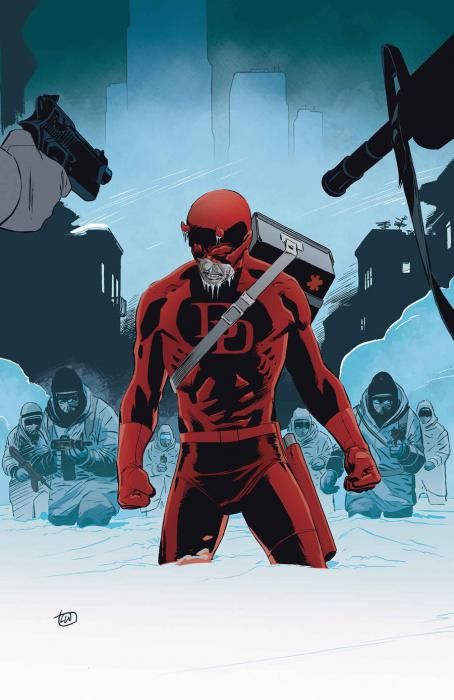Although five issues remain in the series, "Daredevil: Dark Nights" #3 by Lee Weeks is the concluding chapter of the "Angels Unaware" arc, where Weeks continues to focus on Daredevil's heroic determination to save a little girl's life despite obstacles -- like the worst winter storm of the century and interference from a chronic gambler with the mob on his tail.
Weeks really piles on the conflicts Daredevil has to face in order to reach this dying girl; one almost expects to see DD's journey also take him uphill both ways while barefoot. But with all this massive conflict, Weeks reminds readers that a hero's character is measured by the hurdles to he has to jump. Historically, Daredevil has probably been put through the ringer more times and more severely than just about any comics character, so longtime fans probably expect obstacles a lot more dire than Stilt Man showing up unexpectedly to rob a bank.
Mission is definitely accomplished for showcasing Daredevil's status as an extraordinary hero. It's tightly written and integrates plot devices like multiple organized crime factions that could have easily convoluted the story but doesn't in the least. However, with it comes a feeling that anyone not named Mark Waid can't tell such a story without putting the character through more peril than a mouse in a room full of hungry cats. Recent past Daredevil stories like "End of Days" and "Shadowland" have been excellent, in no small part due to the tribulations heaped upon Matt Murdock. But this issue and those preceding it give the feel that if Daredevil is dumped on enough, then it must be a good story. Weeks is skilled enough to make this story work and it's enjoyable enough, but there's an underlying feeling that this kind of storyline is trying to cash in on past successes.
Artistically, Weeks captures the desolate feel of a mostly deserted and completely snowed-in New York City. His lines are simple and he and the other inkers don't drench the pages in black inks, a technique often overused in stories entrenched in desolation. Instead, this feeling is largely conveyed by colorist Lee Loughridge, who uses little more than essentially muted primary colors; darker red is reserved mostly for Daredevil himself, various shades of blue bring out the harsh winter night, and yellow is seen mostly in a brief introduction featuring Foggy Nelson on his Caribbean vacation. In fact, so effective are Loughridge's colors that it's not even immediately apparent that he's limited their use. Great work by a colorist is often noted and recognized for bright and splendid color usage, but here it's notable for not being so noticeable.
This issue is a worthy and satisfying conclusion to a worthwhile story arc, even if it seems to be playing into an ever-darkening trend regarding how Daredevil stories should be told.

